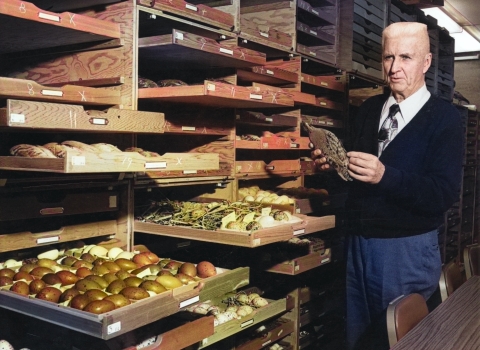You can call it trophy hunting, or you can call it bucket-list destination hunting.
By any description, national wildlife refuges offer several unforgettable hunting opportunities that many outdoorsmen and women would consider the experience of a lifetime. Here are just a few.
Big-Game Hunting in Alaska
The word “Alaska” conjures images of abundant big game, beautiful scenery, solitude and rugged outdoor adventure. For many hunters, Alaska is a dream destination. Alaska’s national wildlife refuges span millions of acres that are home to challenging big game — Dall sheep, brown bear, mountain goat, caribou, moose and musk ox.
Hunting is allowed at all 16 national wildlife refuges in Alaska. Many people choose guided hunts. Guides are permitted on all Alaska national wildlife refuges. Guides are required for all nonresident hunters of brown bear, Dall sheep and mountain goat.
Unguided hunting of other species offers great adventure, but hunters must be prepared for changing weather conditions, difficult meat-packing of large mammals, the presence of bears and other challenges. Self-reliance is a must; if an unguided hunter gets in trouble, help is often hundreds of miles away. Unguided hunters often pursue moose, which can be hunted by floating rivers at many refuges.
Waterfowl Hunting in the South
Bottomland hardwood forests are expansive wetlands in the floodplains of large rivers. Winter rains in the South can cause these rivers to flood beyond their banks and into the surrounding forest. This is when food and resting areas for ducks provide the backdrop to classic flooded timber hunts – the kind where mallards break branches on their way down through the treetops. Find a big cypress or oak tree to hide behind, kick some water to mimic ducks feeding, and start calling – loudly!
Cache River National Wildlife Refuge and Dale Bumpers White River National Wildlife Refuge in eastern Arkansas contain some of the most intact and least disturbed bottomland hardwood forests in the Mississippi Valley region. Stuttgart, Arkansas, right down the road, is known as the Duck Hunting Capital of the World for a reason.
Because of that extraordinary habitat and a location along the Mississippi Flyway, hundreds of thousands of migratory ducks flock to the refuges each winter.
They are just two of the national wildlife refuges in the South that offer exceptional waterfowl hunting opportunities in a flooded timber setting.
Deer Hunting in Northeast Louisiana
Louisiana is called “the Sportsman’s Paradise.” Tensas River National Wildlife Refuge in the northeastern part of the state is one reason why. The refuge attracts about 75,000 hunters a year. They hunt white-tailed deer, ducks, squirrels and more. But it’s the deer that keep them coming back.
“We’ve made a conscious effort to do management that has helped the deer herd,” then-refuge manager Kelly Purkey said in 2016. “Also, I think it’s been marketed well [via social media] that you can come up here and on public land you can kill a trophy wall hanger.” There are no guarantees a hunter will harvest a deer, of course, but “we have the genetics, and because of the very fertile soil from the Mississippi River, we just naturally grow really nice deer. Like right now the state record bow and crossbow kills are both from the refuge.”
Elk Hunting in Montana
For avid elk hunters, it’s no secret: The Missouri Breaks of Montana grow some big elk, and Charles M. Russell National Wildlife Refuge is part of the equation. The refuge habitat along the Missouri River in east-central Montana is ideal for elk. This makes for one of the best big-game hunts in the nation.
Waterfowl Hunting in the Prairie Pothole Region
The Prairie Pothole Region of Minnesota, the Dakotas and a sliver of eastern Montana is known as America’s “Duck Factory,” and it contains some of the nation’s most important waterfowl habit.
The region’s name comes from millions of shallow depressions known as prairie potholes. These potholes, which were formed when glaciers from the last ice age receded about 10,000 years ago, become wetlands seasonally. They support huge populations of breeding waterfowl.
Dozens of national wildlife refuges and waterfowl production areas in the Prairie Pothole Region are open during state hunting seasons. They offer some of the best waterfowl hunts in the country. Hunters who scout in the evening typically have little trouble finding where large concentrations of mallards and pintail are hanging out, setting the scene for a limit of ducks the next morning.







